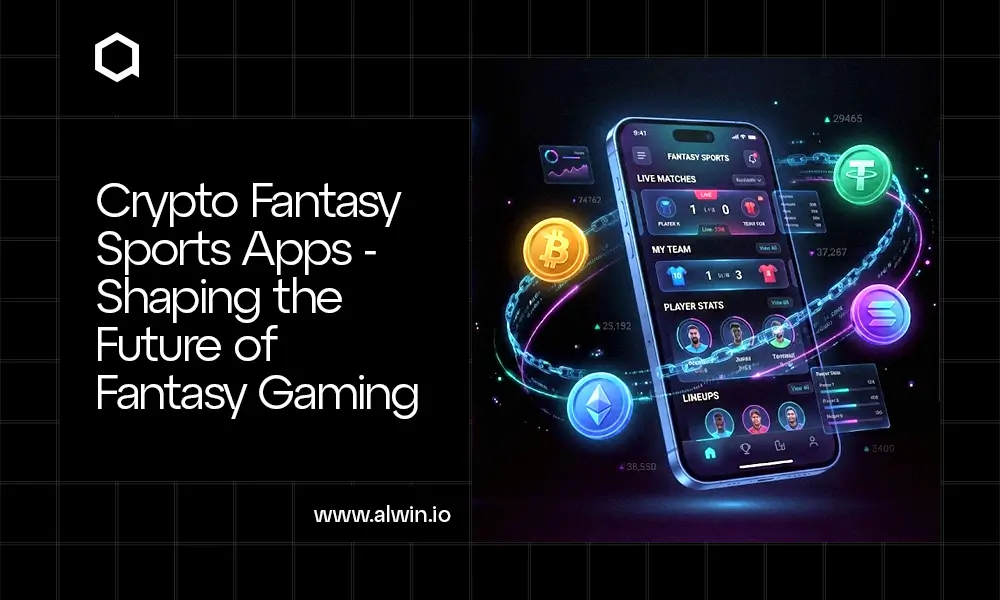In today's digital age, the world of art and collectibles has undergone a remarkable transformation with the advent of NFTs (Non-Fungible Tokens). These unique digital assets have opened up new opportunities for creators, artists, and collectors to explore the realm of digital ownership. One of the exciting niches within the NFT Market is Carbon Credits NFTs, which provide a bridge between environmental sustainability and the world of blockchain technology. If you're an aspiring NFT Marketplace Platform owner or a creator considering venturing into the Carbon Credits NFT space, this article is tailored just for you.
The Concept of a Carbon Credits NFT Marketplace:
Before we get into the tips for a successful launch, let's understand the concept behind a Carbon Credits NFT Marketplace. A Carbon Credit NFT Marketplace is a digital platform where unique digital tokens (NFTs) are employed to symbolize and exchange carbon credits, offering a transparent and efficient method to buy, sell, and trade these credits, helping individuals and organizations offset their carbon emissions. WeAlwin Technologies is the best in developing the Carbon Credits NFT Marketplace.
5+ Tips to Hit the NFT Market:
Tip 1: Research and Analyze the Current NFT Market Trends:
To create a thriving Carbon Credits NFT Marketplace, you need to be well-informed about the ever-evolving NFT Market. Stay updated on the latest trends, including the types of NFTs that are gaining popularity, the artists making waves, and the platforms that are setting benchmarks. By conducting thorough market research, you can make informed decisions that cater to the current demands of NFT enthusiasts.
Tip 2: Develop a User-friendly and Visually Appealing Platform:
The success of an NFT Marketplace heavily depends on its user interface and overall aesthetics. Make sure that your platform is easy to navigate, visually attractive, and responsive across various devices. A user-friendly platform will encourage both buyers and sellers to engage actively in the marketplace.
Tip 3: Implement Secure and Efficient Payment Systems for Transactions:
Security is paramount in the world of NFTs. Implement robust security measures to protect user data and transactions. Additionally, ensure that your payment system is efficient and supports a variety of cryptocurrencies, making it easy for users to buy and sell Carbon Credits NFTs.
Tip 4: Collaborate with Popular Artists and Creators for Exclusive Content:
Collaborations with renowned artists and creators can significantly boost the platform's credibility and attract a larger audience. Exclusive content from well-known individuals can set your marketplace apart from the competition, making it a go-to destination for collectors.
Tip 5: Utilize Effective Marketing Strategies to Attract Buyers and Sellers
Marketing is a crucial aspect of any successful NFT Marketplace. Utilize digital marketing, social media, and content marketing to reach potential buyers and sellers. Engage with your community and create buzz around your platform. Remember, the more exposure you gain, the more likely you are to attract a thriving NFT ecosystem.
Features of Carbon Credits NFT Marketplace:
To create a competitive Carbon Credits NFT Marketplace, consider incorporating the following features:
Staking
Allow users to stake their NFTs to earn rewards. This encourages long-term holding and loyalty within your ecosystem.
Listing NFTs
Create a simple and efficient listing process for users to showcase their Carbon Credits NFTs.
Auction Portal
Implement an auction system where users can bid on NFTs, creating excitement and competition.
NFT Storefront
Enable users to personalize their storefronts, making it easier for collectors to find their favorite Carbon Credits NFTs.
Search Refiner
Provides advanced search options, allowing users to filter NFTs based on their specific criteria.
Smart Contract Development
Make certain that the platform operates on secure and transparent smart contracts to maintain trust and credibility.
Crypto Wallet Development
Integrate cryptocurrency wallets to enable easy and secure transactions.
Benefits of Carbon Credits NFT Marketplace:
By launching a successful Carbon Credits NFT Marketplace, you can offer a range of benefits for both creators and collectors:
Transparency and trust: Utilizing blockchain technology makes certain transparency and trust in carbon credit transactions.
High Return on Investment: Investors and collectors can benefit from the potential appreciation of Carbon Credits NFTs.
Incentivizing Sustainability: By tokenizing carbon credits, you're contributing to a sustainable future and incentivizing eco-friendly practices.
Enhanced Security: Blockchain technology provides robust security against fraud and counterfeiting.
Traceability: Users can trace the origin and history of each Carbon Credits NFT, enhancing the overall value.
Improved Liquidity: NFTs offer high liquidity, allowing users to easily buy, sell, and trade their digital assets.
Consult with our business experts to Build an NFT! Chat with us on WhatsApp
How Carbon Credits NFT Marketplace Works?
Create an Account:
Creating an account on a Carbon Credits NFT Marketplace is the first step. It allows users to access and engage with the platform. Users can register, provide their information, and get started in the world of carbon credits NFTs.
Wallet Integration:
Wallet integration is a crucial aspect of these marketplaces. Users link their cryptocurrency wallets to the platform, enabling secure transactions. This integration ensures that users can buy, sell, and hold carbon credits NFTs conveniently.
List Token:
Listing tokens involves vendors displaying their NFTs for carbon offsets on the market. Potential purchasers can obtain carbon credits by contacting sellers, who offer information about them. This procedure establishes a market for the trade of environmental resources.
Buy and Bid:
Users can either buy carbon credits NFTs at a fixed price or engage in auctions by placing bids. Buying and bidding mechanisms allow users to acquire carbon credits NFTs according to their preference and budget.
Tracker:
The tracking feature is essential for transparency. It enables users to trace the history and origin of carbon credit NFTs. Users can verify the authenticity and history of the environmental credits they're interested in.
Use Cases of Carbon Credits NFT Marketplace:
1. Corporate Carbon Neutrality:
Businesses use Carbon Credits NFT Marketplaces to offset their carbon emissions and achieve carbon neutrality. They can purchase carbon credits NFTs to balance their environmental impact.
2. Eco-Friendly Consumer Products:
Companies producing eco-friendly products often purchase carbon credits NFTs to demonstrate their commitment to sustainability. These credits help offset the carbon footprint associated with their products.
3. Carbon Credit Gifting:
Carbon credit NFTs are offered by people and organizations in favor of environmental initiatives. This form of gifting contributes to carbon reduction efforts and environmental awareness.
4. Sustainable Supply Chains:
Companies striving for sustainable supply chains can utilize carbon credits NFTs to offset emissions related to their operations, ensuring a more environmentally friendly supply chain.
5. Climate-Focused Investment:
Investors are increasingly using carbon credits NFTs as an investment tool. They can purchase these NFTs, which represent real-world carbon credits, potentially gaining value over time.
6. Green Crypto Transactions:
Cryptocurrency transactions can have a carbon footprint. Users can purchase carbon credits NFTs to offset the emissions associated with their crypto activities, making their transactions more eco-friendly.
7. Government Carbon Offset Programs:
Governments and regulatory bodies implement carbon offset programs, and carbon credits NFT Marketplaces can facilitate the trading and utilization of these credits to meet environmental targets.
8. Carbon Credit Crowdfunding:
Crowdfunding campaigns often focus on raising funds to purchase carbon credits NFTs. This collective effort supports environmental initiatives and carbon reduction projects.
Conclusion
In the ever-evolving world of NFTs, the launch of a Carbon Credits NFT Marketplace can be a rewarding venture. By following the tips mentioned above and offering unique features, you can make a significant impact in the NFT market while contributing to a sustainable future.
What are Carbon Credits NFTs?
Carbon Credits NFTs represent a specific amount of carbon dioxide emissions that have been reduced or removed from the atmosphere. They are tokens on the blockchain that validate and track environmental efforts.
What is the NFT Marketplace for carbon credits?
NFT Marketplace for carbon credits is a digital platform where users can buy, sell, and trade digital assets representing real-world carbon credits, helping offset carbon emissions.
How much does it cost to develop a NFT Marketplace?
The cost of developing an NFT Marketplace varies widely, depending on features, and complexity.
Is it profitable to sell carbon credits?
Yes, Selling carbon credits can be profitable for businesses as it allows them to earn revenue while contributing to environmental sustainability and corporate responsibility.
Why should I create a Carbon Credits NFT Marketplace?
Creating such an NFT platform allows you to tap into the growing market of environmentally conscious investors and collectors while promoting sustainability.
What is staking in the context of Carbon Credits NFTs?
Staking involves users locking their NFTs to earn rewards or benefits, creating a sense of commitment to your platform.
How do I ensure the security of my Carbon Credits NFT Marketplace?
Implement strong security measures, conduct regular audits, and use robust smart contracts to ensure the security and trustworthiness of your platform.
How to create carbon credits?
To create carbon credits, businesses and projects must implement emission reduction initiatives, quantify the reductions, and get them independently verified following recognized standards such as VCS or CDM. Once verified, these reductions can be converted into carbon credits for sale in the carbon market.



